Moving up from marketing to SMM to Enterprise is no small leap. It’s not for the faint-hearted.
Where SMB is about volume, quick decisions, and lower levels of buyer consideration, Enterprise marketing is much more about focusing on winning, growing, and retaining your most important accounts – which due to their size and complexity have naturally longer life cycles, higher levels of consideration, and larger buying teams.
So how do you move up from SMB to Enterprise Marketing and shift gears from Demand Generation to Account-based Marketing?
In a recent episode of Let’s talk ABM, I sat down with Daniel Dong, Manager of Expansion Growth at Samsara, to hear his advice on moving from SMB to Enterprise.
In the interview (full recording here) we discussed:
- How to invest in the right data for your program
- The lessons learned when moving from SMB to Enterprise
- Daniel’s ABM thinking, broken down into 4 parts
- Samsara’s approach to problem-solving within ABM
Let’s jump into what steps to take when moving from SMB to Enterprise:
7 steps to move from SMB to Enterprise
1. Decide what problem you're solving
Start by building your ABM framework. Define what problem ABM will solve for your organization, document this, get buy-in, and then build your program.
Setting the right North Star metrics at the beginning will help in building expectations that align with the problem you’re trying to solve.
Without this, your ABM program risks being a rudderless ship without a destination in sight.
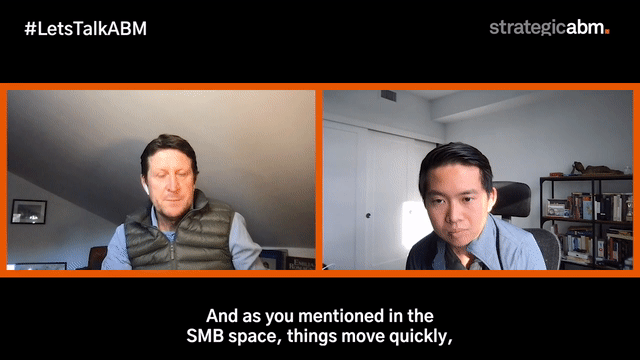
It’s also important to identify other metrics you can use earlier in the funnel that can indicate success and whether your ABM program is heading in the right direction
You may not have a year or two to see a positive ROI, thus identifying key metrics early on is important to ensure a program remains on track and acknowledging when it needs to be adapted. And be prepared to adapt!
“Everybody is different, so you'll need time and space to figure out what the ABM program at the specific company that you're working for means to them. What is the most important thing at the moment, for your business, that the ABM program can help address?” - Daniel Dong, Manager of Expansion Growth at Samsara
2. Invest in the right data
The data you should invest in depends on which stage you’re at with your ABM strategy. Map out your customer's entire journey, then identify the data architecture you need to support that journey.
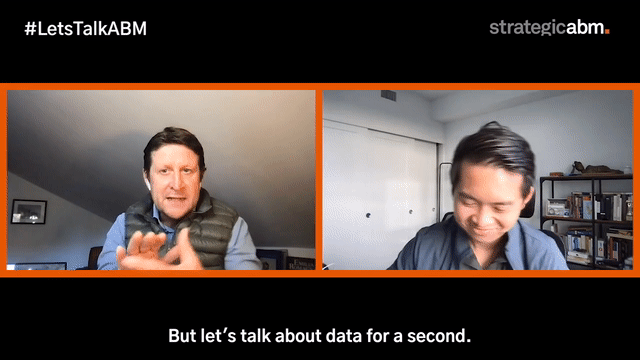
Earlier startups looking for a product-market fit won’t need to invest heavily in intent data, for example.
If the focus is on growth and reaching new customers, then investing in third-party data and ensuring your organization has robust first-party data collection should likely be your focus.
Remember, in the not-too-distant future, third-party data – third-party cookie traction – will no longer be an option. Investment in first-party data collection will become increasingly important!
Finally, if your company already has a large customer base, your focus may need to be on generating insights from those customers, to enable upselling or cross-selling. In this case, it’s time to think about the quality of your existing data and how to go about improving it.
“Think about the end picture - if everything is perfect and you could have everything you want for the customer's entire lifestyle cycle, entire journey, what would that data roadmap look like? What kind of data would you need?” - Daniel Dong, Manager of Expansion Growth at Samsara
3. Leverage qualitative feedback
While investing in the right data is important, data is not always perfect.
Things happen outside of the data that often aren’t captured. That means ABMers need to keep an ear to the ground to collect qualitative feedback.
Acknowledging the significant role qualitative feedback can play is often the first step in ensuring that feedback is valuable. Make sure you take the time to address it.
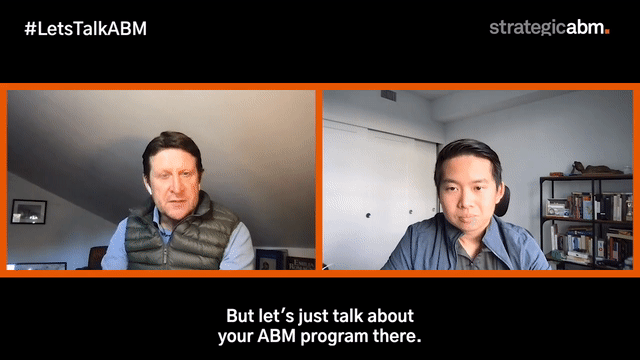
Talk to those on the front line.
Bring Sales into the conversation and find out what leading indicators you can capture to provide more immediate feedback on the activities you’re doing. Herein lies the value of alignment between Sales and Marketing!
“You can't just rely on qualitative feedback because data does tell some sort of truth that humans are not able to capture and so deciding what is a balance between the two, I think that's the tricky part, that's very interesting.” - Daniel Dong, Manager of Expansion Growth at Samsara
4. Get creative with tactics
Once your accounts are selected, creativity can deliver your ABM program in style!
Think about what creative messaging you can use to get people's attention. What channels and ways can you 'ignite' a conversation?
Engagement and success often come from creative tactics. This is where marketers shine.
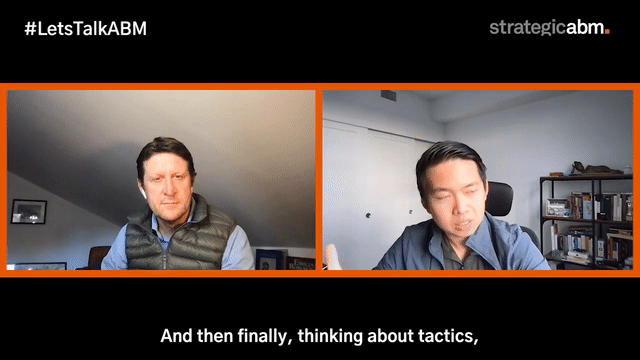
The right strategy, data, and tools will allow creative tactics to succeed. And agility is important. Having the mindset to adapt and encourage uniquely creative messaging – whether that’s insightful content, direct mails or in-person events – is key to a successful ABM program.
What channels and ways can you ignite that conversation? Whether that's through more deeply insightful content, whether that's through a nice nudge, like a direct mail, or in-person events with some sort of twist.” - Daniel Dong, Manager of Expansion Growth at Samsara
5. Take time to experiment
Throughout ABM journeys, don’t be afraid to run experiments and, more importantly, have conviction around those that you want to run. Remember that conversions in SMB tend to happen a lot faster than at an Enterprise level, but in both cases can take time; be patient and trust your intuition!
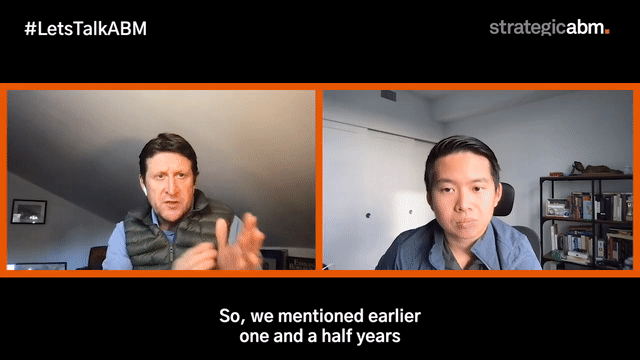
Provided you remain focussed on the results you want to see, and you’re able to clearly define those results, then experimentation can help you get there. Often your intuition is right and remaining patient is the only way to truly find out.
Due to longer sales cycles, increased complexities, and a more ‘considered’ sale, make sure everyone is aware of the ‘expanded’ time to close.
It’s important to clearly define the timeframe for your ABM program to set expectations and ensure results aren’t demanded too early, and that experimentation can happen within long sales cycles.
“It’s something that I wish I could tell myself earlier when I started this journey, is to have a little bit more conviction about your intuition, stick to it, but be very thoughtful about what kind of results you need to see.” - Daniel Dong, Manager of Expansion Growth at Samsara
6. Break down broad problems
Break a broad problem into components or 'buckets'. Then think about what levers you can pull to solve problems in each of those buckets.
It’s important to have an analytical mindset when approaching this as it helps in determining what parts of a problem to prioritize. It’s impossible to prioritize everything, so deciding where to focus gets problems solved quickly and effectively.
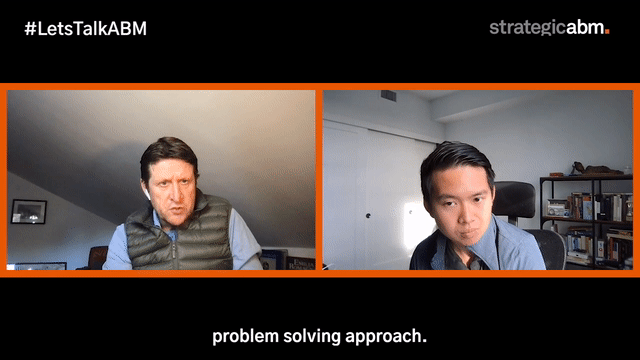
Begin by pulling the ‘solving levers’ that have the biggest impact for the lowest effort. Having this analytical approach to problem-solving, and keeping an A/B test mindset will help you ensure adaptability. It’s important to keep testing so that you know the incremental value provided by any lever you decide to pull.
“Think about the problem that you're trying to solve. And then from there, test out different things and always have a mindset of, if you were trying to present what you've done to somebody else, talk about what the incremental value is of the lever that you're pulling.” - Daniel Dong, Manager of Expansion Growth at Samsara
7. Build a growth Engineering team
Align your growth team around your North Star metrics. Once again, what problem are you trying to solve? What does the end result look like?
Then, make sure you have the capabilities, creativity, and skillset in your team to iterate quickly.
A good growth Engineering team will allow for rapid scaling and implementation of projects.
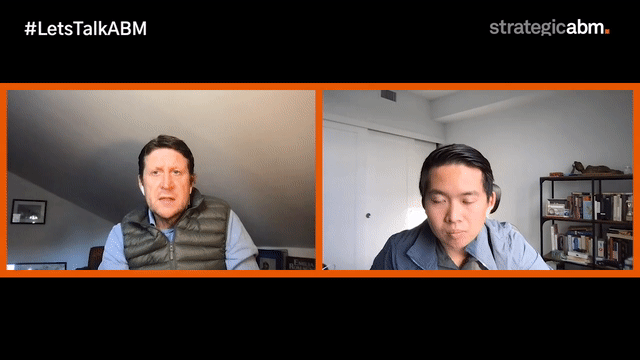
Part of achieving this can come from having a team with diverse backgrounds. For example, Marketers with experience in sales may approach a problem differently or bring additional skills to the table compared to those with different backgrounds.
Likewise, any member of your team that has varied experience in diverse industries encourages creative thinking and agility.
“I think having people with diverse backgrounds help look at problems differently, maybe there are things in kind of their previous experience or industries or skillset that can help solve the problem in a new way that you can't necessarily be done if you just put all kind of the traditional people in the same room.” - Daniel Dong, Manager of Expansion Growth at Samsara
Want to learn more about everything ABM? Check out our Let’s talk ABM podcast series to hear tips and tricks from industry-leading ABMers.







